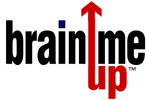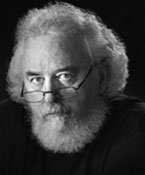The Indefatigable “Strategy of the Dolphin™” Just Keeps on Giving. Its Forte: Helping the Whole Exceed the Parts
The healthy human brain is no dummy. By the time it reaches adulthood, it knows a lot about what works and what doesn’t work. Where it gets in trouble is when things that it thought worked no longer do so, at least not well enough.
When that brain was much younger and in the body of a child, change was much easier. The child brain is quite malleable. When it wants or needs to do something different, doing that different something usually isn’t nearly as difficult as doing something different is for adults.
At one point in his widely admired book, Brain and Culture, Yale psychiatrist Bruce Wexler explains it this way:
“During the first part of life, the brain and mind are highly plastic, require sensory input to grow and develop, and shape themselves to the major recurring features of their environments. During these years, individuals have little ability to act on or alter the environment, but are easily altered by it. By early adulthood, the mind and brain have elaborately developed structures and a diminished ability to change those structures. The individual is now able to act on and alter the environment, and much of that activity is devoted to making the environment conform to the established structures.”
A brain that “backs” its way into maturity
A lot of what happens as the brain ages and matures on the long, arduous journey from birth to adulthood has been a career-focus of the husband-wife research team of Drs. Stephen Rushton and Anne Juola-Rushton at the University of South Florida Sarasota-Manatee. A couple of weeks ago, the Rushtons were sharing their views with parents in Mumbai, India.
My interest was immediately captured by Stephen’s comment (as quoted by an Indian reporter) that “The child’s brain develops from the back to the front.” The two Drs. Rushton took their child-rearing audience on a tour of just how the child brain develops beginning with the spinal cord and cerebellum and moving more or less sequentially over the years to the occipital lobes, parietal lobes, temporal lobes, motor cortex and finally to the frontal/pre-frontal lobes. This doesn’t mean that there are empty spaces where those later-developing organs are, but I understand exactly what the Rushtons are describing: an advancing “biopsychosocial” locus and focus—a forward-moving frontline—to a person’s cerebral capabilities.
While I’ve not had the opportunity to talk with the Rushtons about all this but hope to—we have family in Sarasota and are there often—what I’ve heard thus far sounds highly supportive and endorsing of many of Brain Technologies/Brain Me Up’s applications and explanations. This is particular true of those based on the late Dr. Clare W. Graves’ “biopsychosocial” model of human development. That is to say, our Dolphin strategy models and materials.
My colleague, Dr. Paul Kordis, and I wrote our first “dolphin”-based work more than 20 years ago. Other works on the Graves model followed. Thus far, however, none seems to have caught the attention of a globe-spanning audience with quite the magnetism and usefulness of our book, Strategy of the Dolphin™: Scoring a Win in a Chaotic World. This work appears to speak directly to the desire of its admirers for a better way to understand the marvelous, mysterious dance between brain and culture and for better ways to use that knowledge in their own self-development, organizing and relationships.
From ‘best ever’ lists to the House of Lords
The assignments with which Strategy of the Dolphin have been tasked and the list of its admirers continue to grow.
Just the other day, we learned that our dolphin strategy provided the Inspirational Forum for Organizational Health with the theme for its 31st annual conference at The Hague, Netherlands—in the late 1990s. We’d never have known had not a report on a speech delivered in England’s House of Lords by the organization’s president about a year after Princess Di’s tragic death been recently revisited by a blogger.
While we know of no parents who have named their newborns after the dolphin (or us) because of the book, more than a few organizations have put “dolphin” in their name or dolphins in their logo in the book’s honor. (Alas, our company lawyer has had to remind more than a few enthusiasts that “Strategy of a Dolphin” is one of our trademarks.) In one language and then another, the book is frequently reviewed; here’s a recent French language review—of the French language version of the book, natch—written by a Belgian blogger. Self-development writers can’t seem to stay away from the book and its compelling metaphor for very long, as this recent U.K. article confirms.
And business students who gave oral book reports on SOD years ago sometimes discover that their professors never forgot how moved they were by their students’ enthusiam for the book’s content.
Earlier this year, we learned that SOD is on the short list of “best business books ever” that management professor David C. Wyld maintains. Dr. Wyld has opined that “the authors’ insights are brilliant and so very relevant to the challenges most individuals and organizations faced through the nineties and still grapple with today: going for the elegant outcome; leveraging the wave; breaking set; being on purpose; seeing through the brain’s ‘time window’; releasing to a higher order; pushing the envelope; shifting in time. It’s deep and intelligent, but not intellectual. It’s a thoughtful blueprint and practical road map of useful insight.”
Thanks, Professor!
What keeps this book timely and relevant?
I was already mulling over Professor Wexler’s book and the Rushtons’ model of how children’s brains develop, along with some other ideas about how the brain deals with the need to change. Then came Wyld’s comment that the insights in SOD are still “so very relevant to the challenges most individuals and organizations face….” Why is that, I pondered? Eventually, I penned these thoughts:
To get the adult brain to change, you must work with the way that brain is already wired. It has a lot of beliefs, protocols, habits and practices already in place. It has a strong sense of how it thinks the world ought to be. The best way to make any head way changing all this requires helping people feel like they can use all that knowledge they already have but use it in exciting and productive new ways to do things differently.
The power of the Dolphin strategy is that it doesn’t require people to give up who they are. It simply asks them to take what they know and bring it into a wider, more productive context. Once they do that, then they often discover is that what they’ve added to the mix has not really been merely additive but also transformative. As the old saw puts it, the whole is suddenly more than the sum of the parts.
There’s a right time to think like a Carp (“self-sacrificially”). And a right time to think like a Shark (“controllingly”). And certainly, more and more times when it pays to think like a Dolphin (”situationally and pro-actively combinatorially”). You may need to think like all three in a short space of time. In today’s world, your audience or marketplace can change several times an hour. So at the moment, what people need more than anything else is a new comfort level for being more mentally and emotionally agile, versatile, competent.
This is what we teach with the Dolphin strategy. First, we offer a new way to think about the main ways that people believe, act and respond. There are only a handful of major filtering and belief-formulating scripts that people everywhere follow in daily life. Our goal with the Dolphin strategy is to help individuals recognize those overarching scripts and the behaviors they trigger faster than ever before. When they spot these scripts in others and themselves, they have valuable clues as to how to respond appropriately. And we may be introducing them to a new script—the script of the Dolphin thinker. In today’s marketplace, the Dolphin thinker—particularly, the Dolphin thinking executive and the Dolphin thinking entrepreneur—is going to win or achieve favorable outcomes more often than anyone else, for three reasons:
1) He or she sees change coming quicker than others (because he or she has more perspectives, and a wider perspective, with which to watch for change).
2) He or she understands better than most which change will matter and which may not (because the Dolphin worldview offers a better sense of what lies behind and beyond change and how other worldviews or belief holders are likely to respond to it).
3) He or she thrives on making new things happen, old things better and the world a more competently functioning place (because the appearance of new technologies, new viewpoints and new configurations of people working together doesn’t spook Dolphins but, to the contrary, excites their innovative spirit and outlook).
Not everyone is equipped to think like a Dolphin. But all Dolphins are equipped to help those around them think better, with less fear and inner resistance because the world is changing and needs to change even more.
________
For more information about the Dolphin strategy book and the other Brain Technologies self-growth materials, go here. And you can arrange to take our online Yo!Dolphin! Worldview Survey™ here.


